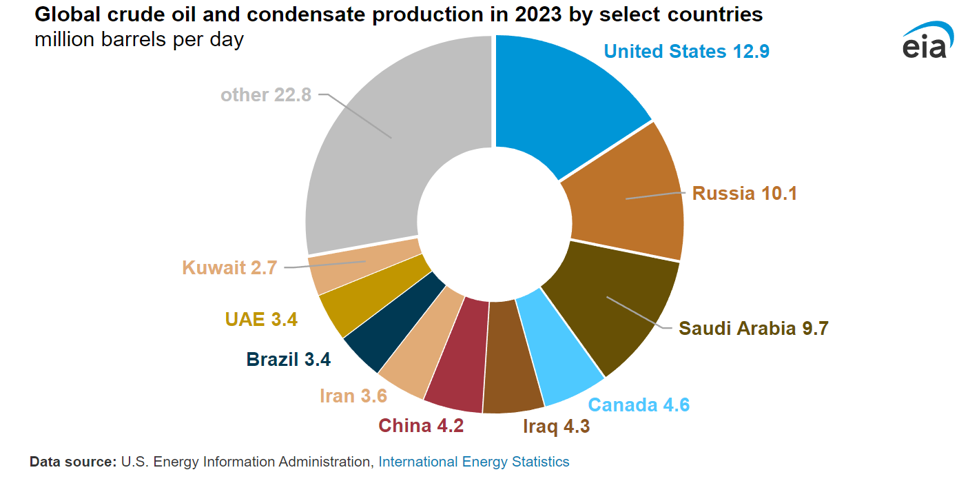In mid-December, I wrote here that the U.S. had set a new annual oil production record:
“The U.S. set a new annual oil production record on December 15, based on data from the Energy Information Administration. Although the official monthly numbers from the EIA won’t be released for a couple of months, we can calculate that a new record has been set based on the following analysis.”
I could project that new record based on the weekly production numbers from the EIA, but I noted that official confirmation wouldn’t come until sometime this year. On March 11, 2024, the EIA made it official: United States produces more crude oil than any country, ever.
The EIA analysis notes that not only did the U.S. break the previous record in 2023, but speculated that no other nation is likely to break it any time soon:
“The United States produced more crude oil than any nation at any time, according to our International Energy Statistics, for the past six years in a row. Crude oil production in the United States, including condensate, averaged 12.9 million barrels per day (b/d) in 2023, breaking the previous U.S. and global record of 12.3 million b/d, set in 2019. Average monthly U.S. crude oil production established a monthly record high in December 2023 at more than 13.3 million b/d.
The crude oil production record in the United States in 2023 is unlikely to be broken in any other country in the near term because no other country has reached production capacity of 13.0 million b/d. Saudi Arabia’s state-owned Saudi Aramco recently scrapped plans to increase production capacity to 13.0 million b/d by 2027.”
The EIA analysis noted that following nearly 40 years of annual production declines, in 2009, U.S. crude oil production experienced a resurgence, attributed to the widespread adoption of hydraulic fracturing and horizontal drilling techniques by producers. Since then, production has continued to climb steadily.
The only interruption to this growth occurred in 2020 and 2021, when demand and prices plummeted due to the economic impact of the COVID-19 pandemic. Notably, recent increases in total crude oil and natural gas production in the United States have been primarily driven by the growth of production in the Permian Basin, located in western Texas and eastern New Mexico.
The world’s three largest oil producers — the U.S., Russia, and Saudi Arabia — accounted for 40% of the world’s oil production in 2023:
One notable difference between the U.S. and the other two major producers is that Russia and Saudi Arabia still produce far more oil than they consume, making them major net exporters of crude oil.
The U.S. is still a net importer of crude oil, but it has been steadily moving toward becoming a net exporter. When only crude oil is considered, the U.S. imported 2.4 million barrels per day (BPD) in 2023. However, that was down from more than 10 million BPD in 2005 and 2006 and was the lowest level since 1972.
The U.S. became a net exporter of finished products like diesel and gasoline in 2011. In 2020, the U.S. reached net exporter status on finished products plus crude oil, and in 2023 those net exports grew to 1.6 million BPD. If the U.S. continues to expand oil production, it could become a net exporter of just crude oil by the end of the decade.
Follow Robert Rapier on Twitter, LinkedIn, or Facebook















